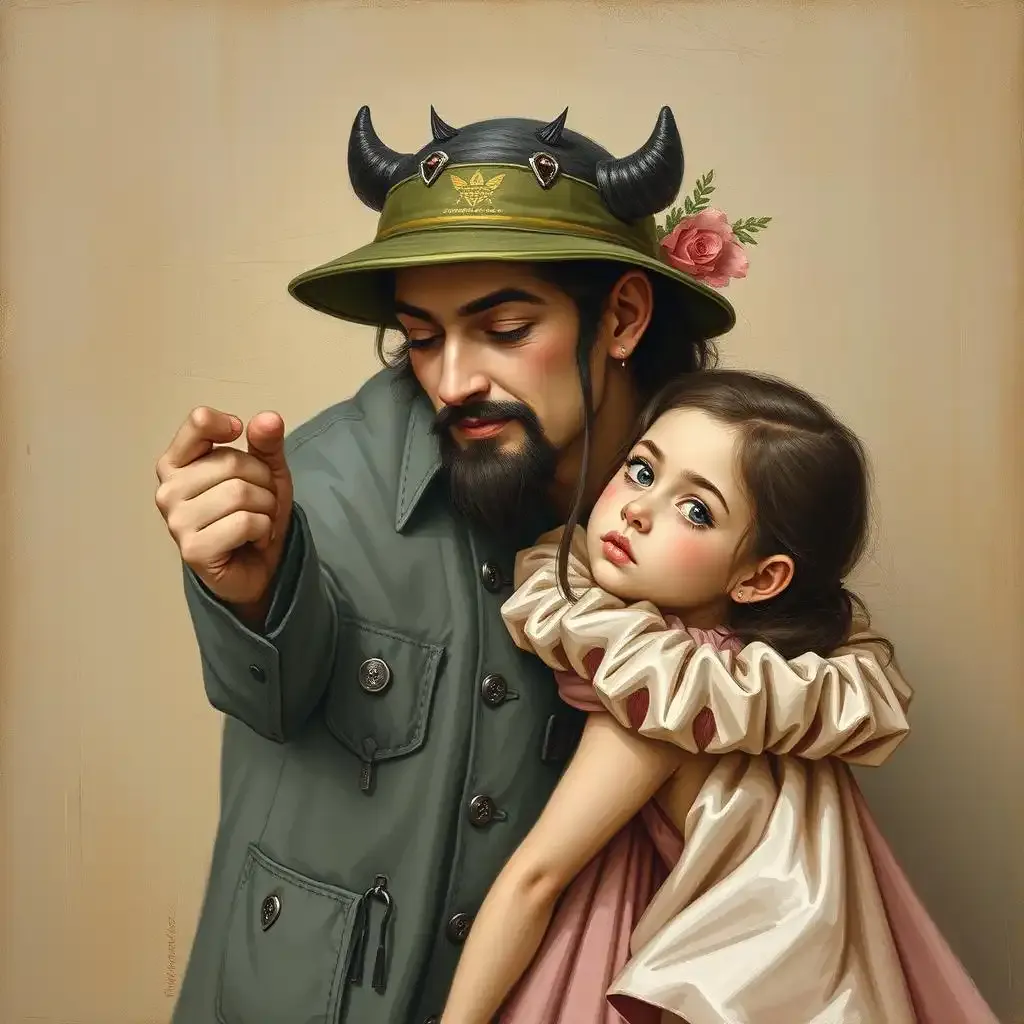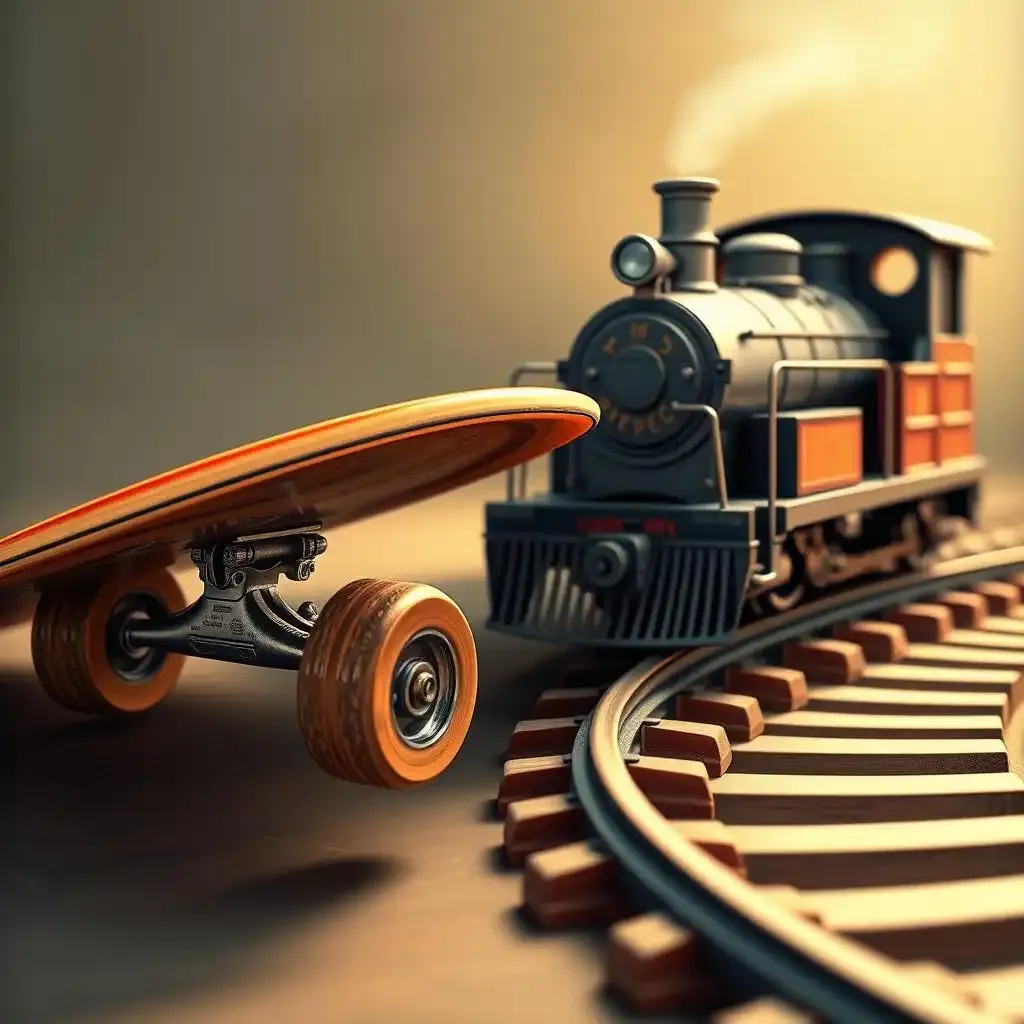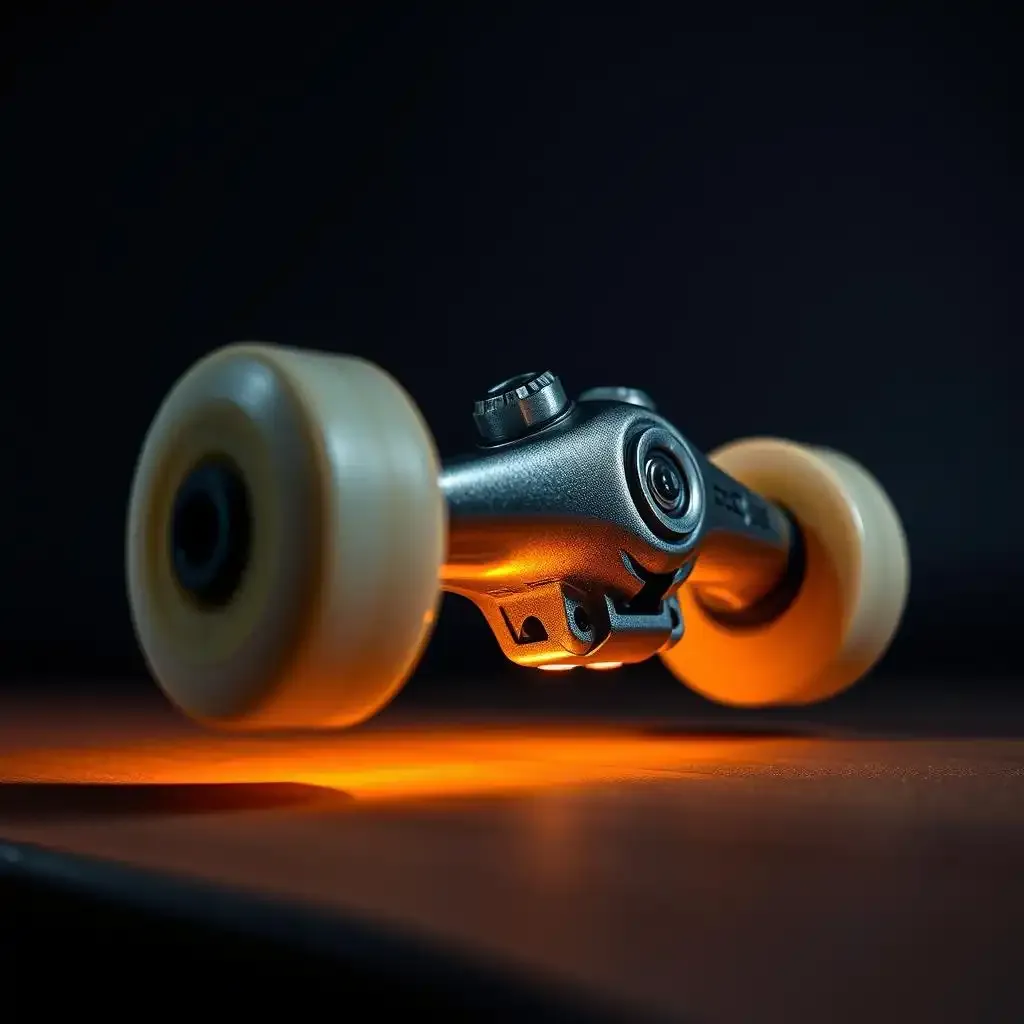Table of Contents
Have you ever looked at a skateboard and wondered about the name of those metal things that hold the wheels? They're called "trucks," and it's not just a random label. The story behind this name is more interesting than you might think. It goes back to the railways, with a association to how train cars move. This article will take you on a trip to explore the origin of the term "trucks" in the skateboarding world. We will break down the mechanics of these essential skateboard parts and explain why they're called what they are. This exploration will look at the functional link between train car wheel assemblies and skateboard trucks. We'll also see why understanding the design of trucks is important for every skater. Get ready to find the story behind the name and appreciate the clever engineering behind those crucial components.
Key Concept | Description |
|---|---|
Origin of the Term "Trucks" | The term comes from train car wheel assemblies, which also allow for movement and tracking. |
Functional Similarity | Skateboard trucks, like train trucks, enable wheels to move in a specific direction. |
Key Components of Skateboard Trucks | Include a baseplate (mounts to the deck), a hanger (holds the wheels), a kingpin (fixes the hanger), and bushings (provide responsiveness). |
Baseplate | The flat piece that attaches the truck to the skateboard deck. |
Hanger | The part that holds the wheels and pivots around the kingpin. |
Kingpin | The bolt that secures the hanger to the baseplate and allows it to rotate. |
Bushings | Rubber or urethane pieces that cushion the hanger's movement and affect how easily the board turns. |
Importance of Trucks | They are essential for steering, turning, and grinding. They are fundamental to the skateboard's function. |
Skateboard Trucks Today | They are still a crucial part of skateboarding, with various designs and materials available. |
The Railway Roots of Skateboard Trucks: Why the Name?
The Railway Roots Of Skateboard Trucks Why The Name
The Train Link
Okay, so you see those metal things on your skateboard that hold the wheels? They're called "trucks," right? Well, here’s a fun fact. The name actually comes from trains. Yep, those big, long things that travel on tracks. Train cars have wheel assemblies that are also called trucks. I know, it's a bit weird, but these train trucks help the cars move and stay on the tracks. So, when skateboarders needed a name for the parts that hold their wheels, they looked at trains. They saw how the train trucks worked and thought, "Hey, that's kind of like what our parts do!"
It's like if you saw a really cool bike and then tried to make your own version. You'd probably use some of the same names for the parts, wouldn't you? That's kind of how it went with skateboards. The people who made the first skateboards noticed how train trucks allowed the wheels to track and move in a certain direction. Then they used the same name for the parts that did the same job on a skateboard. It’s all about movement and direction, just on a much smaller scale. Have you ever wondered how skateboard trucks are made? It's kind of a cool process.
More Than Just a Name
So, it's not just that they look a little similar; it's about how they work. Skateboard trucks let your wheels turn and move just like the train trucks keep the train cars on the track. They're not the same, of course. A train truck is way bigger and stronger, but the idea is the same. And, you know what's cool? Just like trains need their trucks to travel smoothly, we need our trucks to carve and grind. It makes you think that the name "trucks" is more than just a random name. It actually makes sense when you think about how they both work.
Train Trucks | Skateboard Trucks |
|---|---|
Move train cars on tracks | Allow skateboard to turn and move |
Large and heavy-duty | Smaller and lighter |
Keeps train on a fixed path | Allows a skater to change direction |
The Legacy of the Name
It’s interesting how a name from one world, trains, ended up in another, skateboarding. It shows how people borrow ideas and names when inventing new things. It also shows how important it is to look at how things work, not just what they look like. I mean, why skateboards are expensive is a question many people ask, but often we don't think about the name of its parts. The next time you’re skating, think about that train chugging down the tracks and how it's connected to your board. It’s a small piece of history rolling right under your feet!
Anatomy of a Skateboard Truck: How They Work
The Baseplate and Hanger
Okay, let's get into the nitty-gritty of what makes a skateboard truck work. Think of it like a tiny car chassis, but for your board. The baseplate is like the foundation, the part that screws onto the bottom of your skateboard. It's flat and solid, kind of like the floor of a car. Then you've got the hanger. This is the cool, curved metal piece that actually holds the wheels. It hangs down from the baseplate. Imagine a swing set, the hanger is like the swing itself, and it’s where all the action happens. It’s where the axle goes, and the wheels are attached. Without these two parts, your board would just be a plank.
The hanger doesn't just sit there, though. It rotates. This rotation is what lets you turn. It’s like tilting a bike to steer. The hanger moves around a central point, which we'll talk about in a bit. The baseplate is there to keep everything secure. It's the sturdy part that links the truck to your deck. It's like the glue that keeps everything connected. Knowing how these two parts work is key for understanding why are skateboard trucks called trucks, and also crucial for maintaining your board. Ever wondered ? It's a pretty cool process.
Truck Part | Function |
|---|---|
Baseplate | Mounts to the skateboard deck |
Hanger | Holds the wheels and rotates |
The Kingpin and Bushings
Now, let's talk about the kingpin. It's like the main bolt that holds the hanger to the baseplate. It is a big screw that goes through the hanger and baseplate. It's the pivot point that allows the hanger to rotate. Without the kingpin, the hanger would just flop around. Think of it as the axle on a see-saw. The kingpin keeps everything in place but still allows movement. It’s super important for the truck's structure. It keeps things stable while still letting you turn.
And what about those squishy rubber things? Those are called bushings. They're like tiny shock absorbers that sit on the kingpin. They allow the truck to be more responsive when you lean your board. The harder the bushings, the stiffer the truck will be. If you have soft bushings it will be easier to turn. Bushings are what make it possible to carve and turn. It is important to know if trucks come with bushings. They are essential for a smooth ride. Without them, your turns would be super jerky and hard.
- Kingpin: Main bolt that holds the hanger
- Bushings: Rubber cushions for responsiveness
Why Are Skateboard Trucks Called Trucks? Tracing the Functional Link
Why Are Skateboard Trucks Called Trucks Tracing The Functional Link
Okay, so we know the name "trucks" comes from trains, but why is that? It's not just because they look a little similar. It's because they do a similar job. Think of it like this: train trucks keep train cars on the tracks and help them move smoothly. They guide the train in a certain direction. Skateboard trucks do the same thing, but for your board. They keep your wheels moving and allow you to turn, carve, and do all those cool tricks. It's all about controlling movement. If you're curious about other components, you might find it interesting to know how skateboard wheels are made.
The link between train trucks and skateboard trucks is all about function. Train trucks are heavy-duty and keep those giant train cars moving, skateboard trucks are smaller and lighter, but they control the movement of the board. Both types of trucks are designed to manage direction and movement. It’s the same idea, just on a different scale. It's like how a big truck and a toy truck both have wheels and axles. They do the same job, just one is much bigger and stronger. It's this shared function that made skateboarders call their wheel holders 'trucks'.
Let's think about it another way. Imagine you're playing with a toy car. The wheels need to be attached to the car's chassis so it can move. That's exactly what the trucks do for a skateboard. They're the association between the wheels and the board. This allows you to control the board. Now, might also be a question in your mind, but the truck is one of the most important parts of the skateboard. This relationship allows you to steer, turn and control the board. It's like a mini-version of a train truck and its car, guiding it along the rails. The main idea is still the same: they both control movement.
So, next time you're skating, remember the train trucks. They're the big cousins of your skateboard trucks. They show how things that look different can have similar jobs. And it's pretty cool how the name stuck around, showing a link between trains and skateboards. It’s not just a random name, it’s a name that makes sense when you think about how things move and how they are connected. By the way, have you ever wondered ? It’s a great question that helps you know your board.
Skateboard Trucks: More Than Just a Name, A Key Component
Skateboard Trucks More Than Just A Name A Key Component
Beyond Just Metal
Okay, so we've talked about where the name "trucks" comes from, which is pretty cool, right? But skateboard trucks are way more important than just a name. They're the heart of your board. Without them, you'd just have a piece of wood with wheels that wouldn't turn. They're what lets you actually *skate*. I mean, think about it: they're what connects your feet to the ground. They give you the ability to lean, turn, and do tricks. They're the unsung heroes of skateboarding, and they're not just some random pieces of metal bolted on. They're designed and engineered to make riding fun.
It's like the difference between a bike and a unicycle. A unicycle can't turn well because it's just one wheel. A bike has two wheels, but it also has a steering system that lets it turn. Skateboard trucks are like that steering system. They give you the strength to carve, grind, and just generally have fun on your board. And they're surprisingly complex for something that looks so simple. Without them, you'd just be stuck in a straight line. To understand more, you can check out .
Truck Aspect | Importance |
|---|---|
Steering | Enables turning and carving |
Stability | Keeps board balanced |
Trick Execution | Allows for grinds and other tricks |
The Skater's Relationship
When you think about it, trucks are your direct association to the board, and the board is your relationship to the street. This means every turn, every grind, every ollie, all goes through those trucks. They’re not just there to hold the wheels. They’re the key to making skateboarding what it is. They’re the reason you can zip around and feel the movement of the ground beneath you. They are your feet's best friend. They translate your movements into action. It's a pretty big responsibility for a couple of pieces of metal, right? It's like they're the conductors of your skating symphony.
And that's why the type of trucks you have can make a big difference. Some trucks are designed for speed, others for tricks, and some for just cruising around. It's all about the way they’re designed, and how the bushings and other components work together. Just like some cars are better for racing, and some are better for off-roading, skateboard trucks are designed to handle specific types of skating. It's important to find the right ones for your style. You might be curious about , but the trucks are a key reason for that cost.
- Direct link to the board
- Translate movements into action
- Crucial for controlling the board
Wrapping It Up: The Enduring Legacy of Skateboard Trucks
So, there you have it. The name "trucks" for those essential parts of your skateboard isn't a mystery anymore. It’s a nod to the railway, where similar wheel assemblies are also called trucks. This is a great example of how design and function can influence the language we use. Skateboard trucks are more than just metal pieces; they are the critical link between your feet and the pavement. They allow you to turn, grind, and express yourself on your board. From the baseplate to the bushings, each component plays a vital role. Understanding this history and mechanics can certainly make you appreciate your skateboard even more. So, the next time you’re skating, remember the railway roots of those trucks beneath your feet.